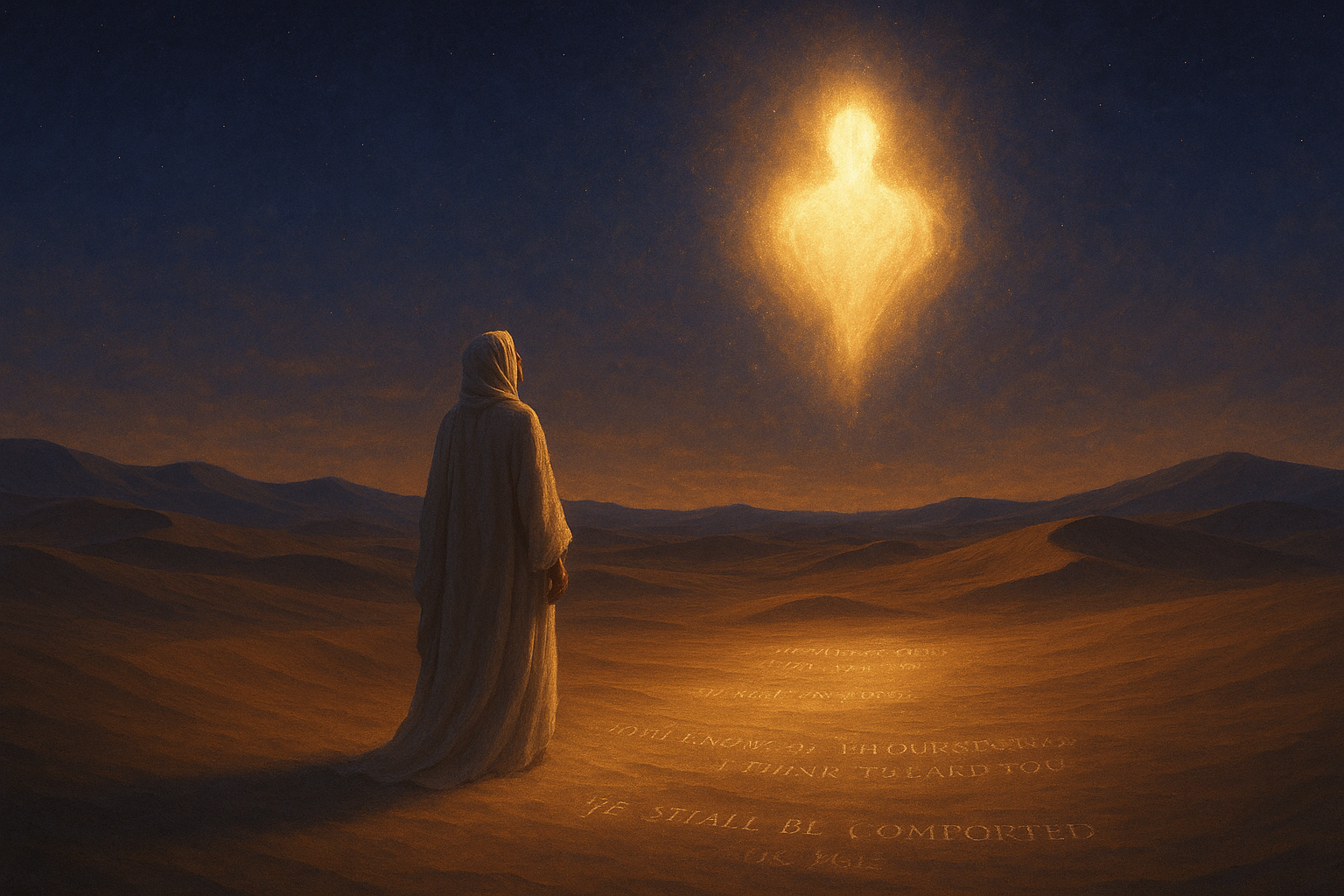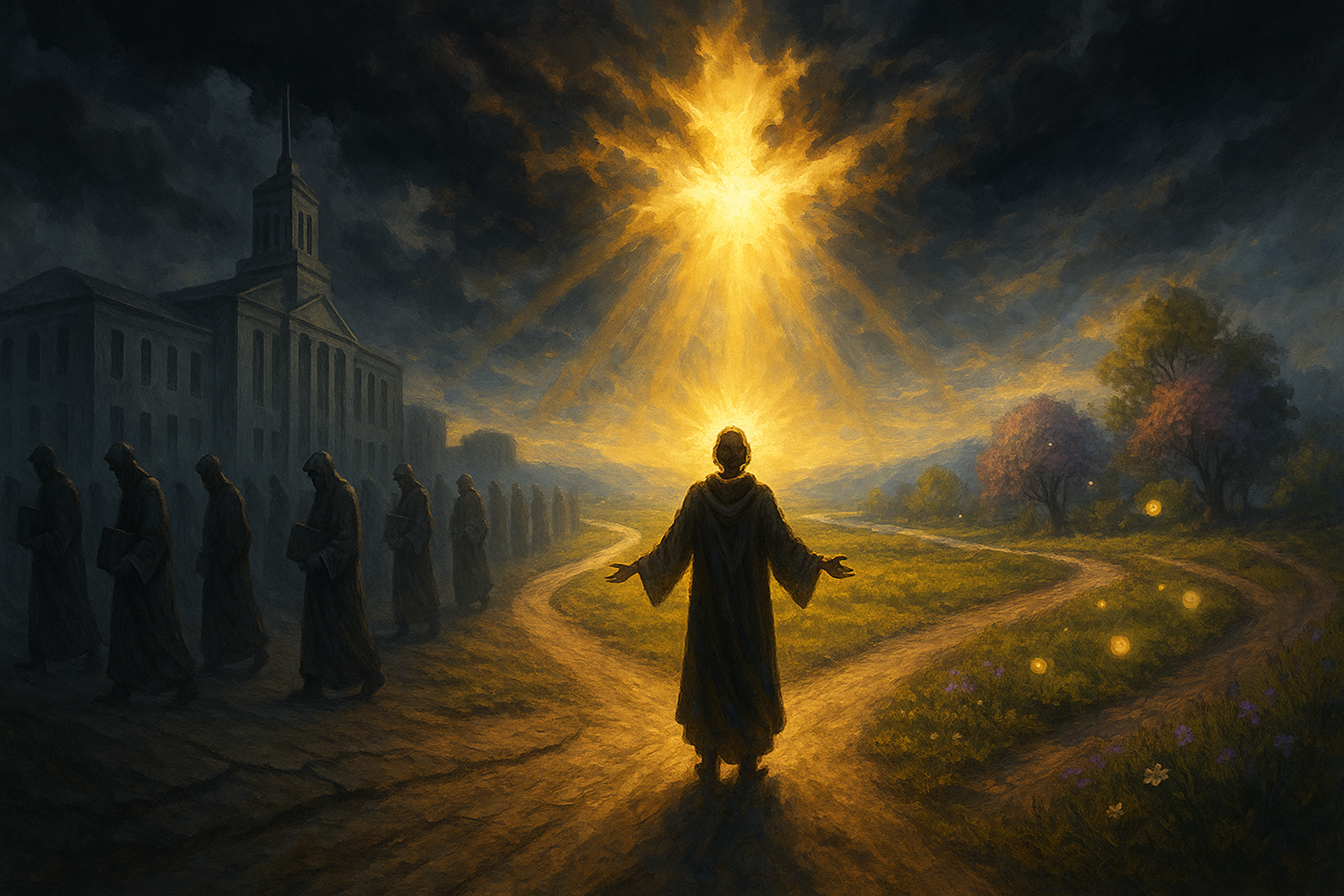Scripture offers key promises that invite deep reflection. Luke 2:14 declares, "...and on earth peace, good will toward men," suggesting a peculiar cosmic intent for harmony and benevolence toward humanity.
Jeremiah 29:11 further emphasizes this: "For I know the thoughts that I think toward you, saith the LORD, thoughts of peace, and not of evil, to give you an expected end." This passage highlights a purposeful cosmic plan centered on inward tranquility.
Isaiah 66:13 evokes a nurturing image: "As one whom his mother comforteth, so will I comfort you."
Together, these verses portray a compassionate living Mind over the individual and extending solace when needed.
The Challenge of Understanding Spiritual Fulfillment
While many who study the Bible know these passages, their deeper meaning can be elusive. John 4:24 states that "God is a Spirit," and Luke 24:39 clarifies that "a spirit hath not flesh and bones." This non-physical nature of “God” raises questions: How can an incorporeal Being provide tangible comfort, peace, or good will in a realistic way?
Consider these questions: How does a spirit, without a body, offer consistent human-like comfort? What kind of good will comes from an entity outside of humanity? Can peace stem from a source that doesn’t ultimately experience it physically? What thoughts can a non-physical being have for those bound by flesh?
Often, interpretations lean on inherited teachings or cultural assumptions rather than the Bible’s own logic. Without grounding in its context, one might drift into speculation, forming beliefs that stray from its intent. This risks misrepresenting the "peace" and "good will" a spiritual (no-flesh-having) “God” provides.
How Does Such a God Provide Comfort?
This leads to a central question: If God is Spirit, and if a spirit does not have flesh and bones, how can or does a spirit comfort? Without a physical form, this Being’s comfort cannot rely on physical means. While traditional theology offers various answers drawn from various ecclesiastical perspectives, the Bible itself points to one solution.
The answer is "righteousness"; not ritualistic practice, but a certain type of kindness. Titus 3:4 describes this as "the kindness and love of God our Saviour toward man." Titus 3:5 elaborates: "Not by works of righteousness which we have done, but according to his mercy he saved us, by the washing of regeneration, and renewing of the Holy Ghost."
It is through the regenerating of what is within, or the cleansing of what is within, that this living Mind comforts. In other words, that comfort is manifested as one executes the saying, “Acquaint now thyself with him, and be at peace...Receive...from his mouth, and lay up his words in thine heart” (Job 22:21,22).
Two Forms of Righteousness in Scripture
The Bible presents "righteousness" in two contrasting ways, each with significant implications for spiritual or devotional freedom.
The first is a rigid adherence to handwritten religious rules. This form of righteousness binds individuals to external dictates, suppressing genuine devotion and personal freedom. We learn about this from how it says, “That except your righteousness shall exceed the righteousness of the scribes and Pharisees, ye shall in no case enter into the kingdom of heaven” (Matthew 5:20). Beauty from religious law is the first form of “righteousness,” and this form is false.
In contrast, the manner of righteousness within the Hebrew Scriptures restores freedom. It liberates the conversation’s inner dialogue from external constraints, granting autonomy in thought, emotion, action, and behavior. This aligns with Isaiah 61:1: "To proclaim liberty to the captives." Here, “righteousness” is not obligation but emancipating grace, in that one says, “Create in me a clean heart, O God; and renew a right spirit within me” (Psalm 51:10).
The Gospel: Liberty Through Kindness
The gospel, or "good news," is often misunderstood as a call to emulate, whether by ritual or by religious law, a divine literary figure’s nature. Instead, Scriptures frames it as a "good will,” a kindness aimed not really at individuals, but at their inner devotional culture. This liberation from false devotion is the essence of the Bible’s philosophy, which consistently states, “...through knowledge shall the just be delivered” (Proverbs 11:9).
By viewing the Bible in its cultural and philosophical context, one can pursue its intended peace, comfort, and good will. Our experiences extend beyond traditional teachings or assumed knowledge. Religious systems often shape our spiritual lens, obscuring the deeper reality. The "expected end" promised in Jeremiah 29:11 is freedom from these doctrinal constraints to personally know the character of the Bible’s Mind, encouraging a devotion reflecting its kind will for our personal and devotional self. When studying Scripture, this pursuit of authentic “righteousness” should guide our focus, leading to true spiritual fulfillment.



